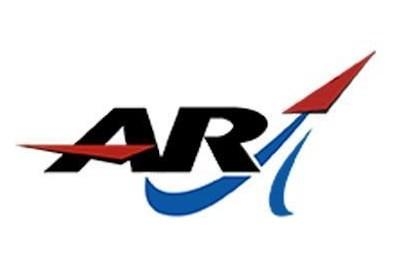Wed, Jun 26, 2019
Green Propellant Infusion Mission (GPIM) Will Demonstrate In Space For The First Time A New Non-Toxic Propellant
Aerojet Rocketdyne, along with NASA, Ball Aerospace and the Air Force Research Laboratory (AFRL), is helping usher in a new era of small satellite propulsion through the Green Propellant Infusion Mission (GPIM). On June 24, a Ball Aerospace small satellite was launched from NASA’s Kennedy Space Center in Cape Canaveral, Florida. The spacecraft will conduct a 13-month demonstration of a revolutionary “green” propellant developed by the AFRL, called AF-M315E.

Powered by this green propellant, Aerojet Rocketdyne’s green propellant propulsion system will enable the spacecraft to execute and demonstrate orbital maneuvers in space. The system includes five 1-newton thrusters: four for attitude control and one for orbit maneuvering. This will be the first space-based demonstration of Aerojet Rocketdyne’s green propulsion technology utilizing AF-M315E propellant.
“Aerojet Rocketdyne has provided trusted and reliable in-space propulsion to industry, government and commercial partners since the beginning of the space age,” said Eileen Drake, CEO and president of Aerojet Rocketdyne. “We’re excited to expand upon this legacy with our new green propulsion technology, which will enable increased satellite performance and provide propulsion options to SmallSats that previously weren’t available.”
AF-M315E is a higher performance and environmentally-friendly alternative for chemical propulsion operations that traditionally use hydrazine. Because of its increased density and higher performance, satellites can achieve extended operation timelines and increased maneuverability. Its lower freezing point eliminates the need for added onboard heating systems, resulting in a greater mass allowance for added life. Green propellant is also non-toxic, which enables safe handling of the propellant and simplifies pre-launch processing.
NASA is interested in using green propellant for various next-generation spacecraft and launch vehicles to the Moon, Mars and beyond. Proving this new technology is effective and efficient in space will open the door for green propulsion to become a viable option for future missions. Aerojet Rocketdyne’s green propellant propulsion system was developed at the company’s Redmond, Washington, facility.
(Source: Aerojet Rocketdyne news release)
More News
“These new aircraft strengthen our ability to respond quickly, train effectively and support communities nationwide. Textron Aviation has been a steadfast supporter in helpin>[...]
From 2011 (YouTube Edition): Rugged, Legendary, STOL Twin Makes A Comeback The de Havilland Twin Otter is an airplane with a long history, and it gained a reputation as a workhorse>[...]
A Wind Gust Lifted The Right Wing And The Airplane Turned To The Left Analysis: The pilot was departing from a 2,395-ft-long by 50-ft-wide turf runway. The pilot reported that afte>[...]
Have A Story That NEEDS To Be Featured On Aero-News? Here’s How To Submit A Story To Our Team Some of the greatest new stories ANN has ever covered have been submitted by our>[...]
Braking Action Advisories When tower controllers receive runway braking action reports which include the terms “medium," “poor," or “nil," or whenever weather con>[...]
 Aero-News: Quote of the Day (12.18.25)
Aero-News: Quote of the Day (12.18.25) Classic Aero-TV: Viking Twin Otter 400--Bringing the DHC-6 Back Into Production
Classic Aero-TV: Viking Twin Otter 400--Bringing the DHC-6 Back Into Production NTSB Final Report: Rans Employee Flying Club Rans S-6ES Coyote II
NTSB Final Report: Rans Employee Flying Club Rans S-6ES Coyote II ANN FAQ: Submit a News Story!
ANN FAQ: Submit a News Story! ANN's Daily Aero-Term (12.18.25): Braking Action Advisories
ANN's Daily Aero-Term (12.18.25): Braking Action Advisories



